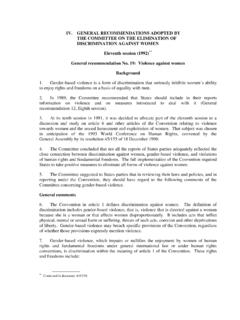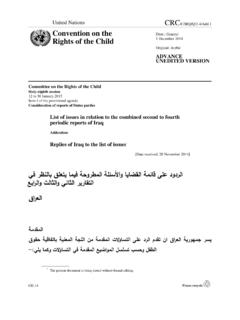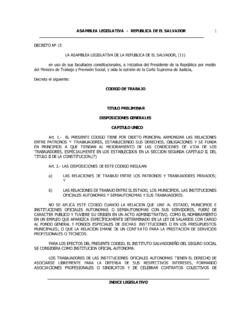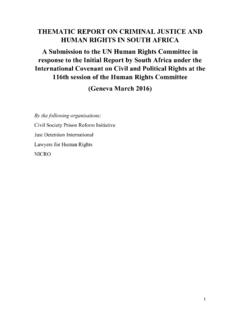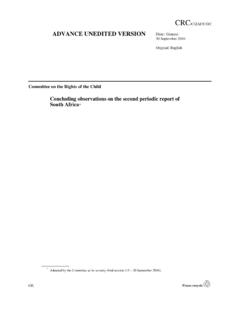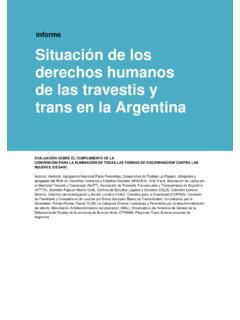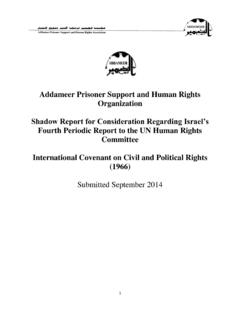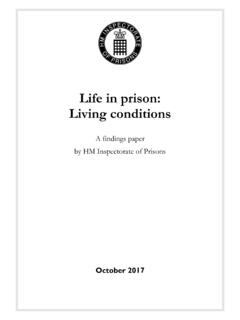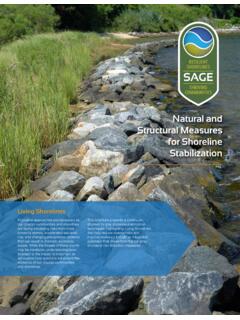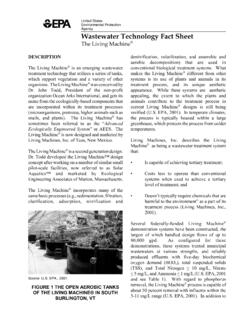Transcription of The Death Penalty in Japan: The Law of Silence
1 The Death Penalty in Japan: The Law of SilenceGoing against the International TrendInternational fact-finding missionArticle 1 : All human beings are born free and equal in dignity and rights. They are endowed with reason and conscience and should act towards one another in a spirit of brotherhood. Article 2 : Everyone is entitled to all the rights and freedoms set forth in this Declaration, without distinction of any kind, such as race, colour, sex, language, religion, political or other opinion, national or social origin, property, birth or other status. Furthermore, no distinction shall be made on the basis of the political, jurisdictional or international status of the country or territory to which a person belongs, whether it be independent, trust, non-self-governing or under any other limitation of 505a October 2008 Tokyo Detention CentreFIDH - The Death Penalty in Japan: The Law of Silence / 2 FIDH - The Death Penalty in Japan: The Law of Silence / 3 ContentsIntroduction 4I.
2 The Japanese Context 6 Context and history of the application of the Death Penalty in JapanActorsAuthorities Officials at Ministry of Justice Detention Centre Personnel Political PartiesCivil society Lawyers victims families and detainees families NGOs and the movements in favour of abolitionReligious representativesThe influence of mediaII. Current debates 18 SecrecySeparation of powersLife imprisonment without parole and a toughening of penaltiesFallacious arguments Justification by public opinion The confusion between the rights of victims and the Death Penalty The cultural argumentIII. Legal Framework 25 Domestic law and normsInternational law United Nations Japan ratified the United Nations Convention Against Torture in 1999 The Council of Europe The European Union The International criminal court (ICC)IV. Violations of the right to a fair trial 30 Daiyo kangoku: an unacceptable status quoFree legal assistance at all stagesThe Problem of Legal Remedies The First Level of Jurisdiction The Right of Appeal Retrial Pardon V.
3 conditions of detention and of execution 37 living conditions in the Detention Houses Visits and Contacts Visits and Meetings Communication and Correspondence Medical Care and Health Medical and Mental Care Exercise and Hygiene Suicide Prevention RecreationComplaintsExecutionVI. Conclusion and recommendations 47 ConclusionRecommendationsFIDH - The Death Penalty in Japan: The Law of Silence / 4 FIDH - The Death Penalty in Japan: The Law of Silence / 4 IntroductionIn the framework of its engagement in favour of the universal abolition of the Death Penalty , FIDH undertakes international fact-finding missions in countries where this inhuman practice is still carried out. These missions have four objectives: (1) to highlight the iniquity of this punishment, one already abolished in law in 91 countries, abolished for all but exceptional crimes, such as crimes committed during wartime, in 11 other countries, and a punishment that, while still legally sanctioned in 35 more countries, has led to no execution for 10 years (de facto abolitionist countries); (2) to show that as a general rule prisoners condemned to Death or executed throughout the world do not benefit from fair trials, in the sense given to the term under the Universal Declaration of Human Rights and the International Covenant on Civil and Political Rights (ICCPR), making the sentence even more unacceptable.
4 These missions of enquiry also have as objectives to (3) turn the spotlight on and publicise the living conditions of Death row detainees, from the time of conviction to execution. The situation of detainees often amounts in reality to cruel, inhuman and degrading treatment , prohibited by international human rights law. Finally, (4) in leading such missions of enquiry, FIDH formulates recommendations to authorities in the countries concerned as well as to relevant actors, in a spirit of dialogue and in order to support, to the extent that it is possible, their efforts in favour of the abolition of the Death Penalty or, at the very least, in support of a moratorium on report is the result of an international fact-finding mission to Tokyo from the 25 July to 3 August 2008. A previous enquiry mission on the Death Penalty had been conducted by FIDH in Tokyo in October 2002, resulting in the publication of a report in May 2003 (see, in annex, the recommendations formulated in this report).
5 The current mission aimed at assessing the extent to which the previous reports recommendations have been implemented and at registering the evolution of the Death Penalty in Japan since the previous enquiry. The mission was composed of three members - Mr. Dan Van Raemdonck, Professor of Linguistics at the University of Brussels and Vice-President of FIDH; Florence Bellivier, Professor of Law at University Paris X-Nanterre and Secretary-General of FIDH, in charge of the question of the Death Penalty ; and Jiazhen Wu, member of the Executive Board of the Taiwan Association For Human Rights, FIDH member organization. FIDH would like to sincerely thank the Centre for Prisoners Rights (CPR) for its constant support in the lead up to and during the mission, as well as Forum 90 Calling for Ratification of the Second Optional Protocol to ICCPR, Amnesty International - Japan, and the Japan Federation of Bar Associations (JFBA) for their invaluable in 2002, the cooperation of Japanese authorities afforded to the FIDH mission was not entirely satisfactory.
6 The Minister of Justice did not respond to the mission s meeting request. The mission was only able to meet with senior officials within the Ministry of Justice. These officials indicated to the mission that Japan no longer performs executions only in between Parliamentary sessions or during periods of public and political holidays, a state of play strongly criticised in the previous report, which castigated Japanese authorities for doing all in their power to stifle debate on the subject. With patent cynicism, the officials indicated to the mission that in response to the previous report, executions since 2002 take place regularly throughout the addition, the Supreme Court refused to meet with the mission, providing instead an assortment of data that he requested be included in the mission report. As the mission members were unable to discuss these figures in any way with the Court, it was decided to not comply with the request.
7 According to a number of anonymous sources in the judiciary, the Supreme Court FIDH - The Death Penalty in Japan: The Law of Silence / 5 FIDH - The Death Penalty in Japan: The Law of Silence / 5was displeased with the previous FIDH report, which the Court believed inaccurately represented past FIDH representatives visited two detention centres: a newly built centre in Tokyo and another in Nagoya. Contrary to the brevity of visits permitted in 2002, those permitted for the current mission each lasted between two and two and a half hours. On each occasion, the FIDH mission was received courteously by the Prison Director and by two or three of his staff. Following a half an hour PowerPoint presentation, almost as an advertisement, the mission members were able to visit empty cells (both individual and collective), without ever being able to enter into contact or communication with the detainees, as well as detention centre infrastructure (kitchens, workshops, exercise areas etc.)
8 While those condemned to Death are prohibited from leaving their cell throughout the day (excluding bathing, exercise and visits), they are held in wings with a variety of detainees. Reticence in the face of publicity is characteristic of Japanese authorities positions vis-a-vis the Death Penalty , an issue that is made as deliberately opaque as possible. Today, executions are systematically announced in Japanese news after they have taken place. While, in comparison to 2002, the question of the Death Penalty makes headlines more often, this development springs less from the public questioning of the Death Penalty than an official effort to prepare public opinion for the judicial reform at-hand concerning the introduction of lay judges in serious cases including Death Penalty cases. In any case, the conditions of detention of Death Penalty detainees go largely unnoticed by the FIDH mission met with approximately 50 individuals:1 members of the legal profession (JFBA, Japanese Federation of Bar Associations, that represents a total of 19,500 jurists countrywide), judges, a Professor of Law at Aoyama Gakuin University (Mr.)
9 Niikura Osamu), journalists, abolitionist groups (Forum 90, Amnesty International - Japan), one pro- Death Penalty Parliamentarian, Parliamentarians and members of the Diet Members League for the Abolition of the Death Penalty , and a delegation from the French Embassy given the current French presidency of the European Union. The mission met also with the members of Death row prisoners families, members of civil society, including prison visitors (Soba-no-kai, an anti- Death Penalty grassroots group), members of the victims movement in favour of the abolition of the Death Penalty (Ocean) and a religious pastor working within an ecumenical religious association supporting abolition. Victims families associations in favour of the Death Penalty refused to meet with the points of view of those met diverged, ranging from support for the total abolition of the Death Penalty to an intransigent support for the maintenance of the application of the Death Penalty , passing through those in favour of the possibility of implementing a new replacement punishment, the subject of a recently launched debate within society - life imprisonment without possibility of parole.
10 Putting Japanese society in context is necessary. The toxic gas attacks committed in the Tokyo Underground by the Aum Sect in 1995 remain omnipresent for many. Moreover, while criminality and the number of prisoners in Japan is proportionally lower than in comparable countries,2 Japan also has had to deal with offence similar to the American Columbine massacre, which, while isolated, attract significant press attention and influence public opinion. At the same 1. See Annex for list of persons In France, for example, the number of yearly homicides is slightly lower than 1000, while in Japan, with a population double that of France, witnessed 1190 murders in 2007. This was the lowest rate of homicide since World War Two, according to CPR. As of December 2007, there were 79809 prisoners, being per cent times the French equivalent. In December 2006, there were 81255 prisoners, compared to 50897 in 1997. This indicates the rapid increase in detainees over the last ten years, with only one decrease in 1997.
